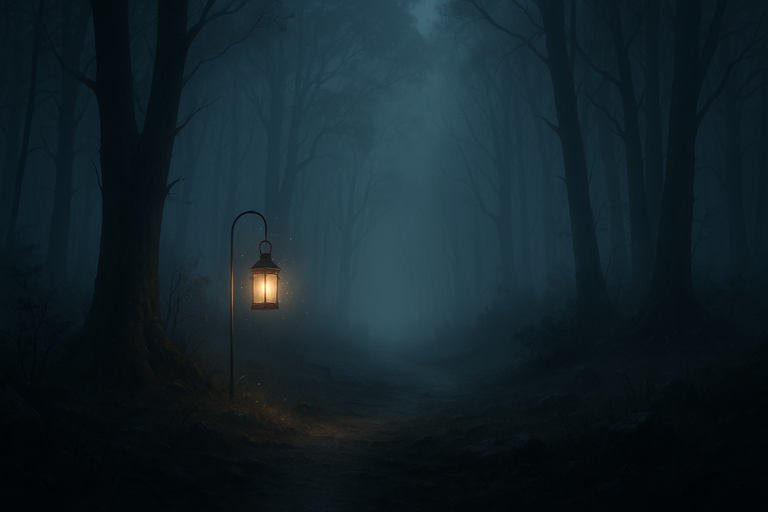
Silence and tension in storytelling: how quiet moments shape unforgettable game tales (2025)
In every story, there are moments when words fade and action slows. These pauses are not empty — they are charged with possibility. Silence and tension in storytelling give narratives the space to breathe, inviting players and readers alike to lean in, to wonder, and to anticipate what might come next.
Game tales, like traditional stories, thrive on rhythm. Spells of quiet contrast with bursts of action, shaping the emotional journey of the audience. Without silence, tension has no room to grow; without tension, silence loses its weight. Together, they create a balance that transforms ordinary play into something unforgettable.
This article explores how silence and tension in storytelling shape powerful game experiences. We’ll look at the psychology of quiet, the techniques that make it work, and the risks of overusing it. Along the way, you’ll see why moments of stillness are never wasted — they are the secret pulse that keeps stories alive.
The psychology of silence and tension in storytelling
Silence and tension in storytelling work because they connect directly to how the human brain processes uncertainty and expectation. When sound or action suddenly falls away, our senses sharpen. We lean in, waiting for the next signal. This psychological shift makes silence one of the most powerful tools for creating suspense and emotional depth.
At a neurological level, silence activates the same systems that respond to risk and discovery. Our attention heightens in quiet spaces because the brain is wired to notice contrast. A moment of stillness after noise feels significant, while silence broken by sudden action delivers an even stronger impact. This interplay between absence and presence is what turns a pause into anticipation.
Emotionally, silence offers room for reflection. In a game tale, quiet moments let players process what has happened, prepare for what is to come, and imagine possibilities beyond what is shown. Tension thrives here: the story hangs in suspension, balanced between calm and the unknown.
Culturally, silence also carries meaning. In some traditions it signals respect or reverence, in others it suggests danger or secrecy. When woven into narrative design, these associations deepen immersion, allowing silence to resonate beyond the immediate scene.
Ultimately, the psychology behind silence and tension reminds us that not every beat of a story must be filled. The absence of sound or action is not emptiness — it is space charged with potential, waiting to be discovered by those who dare to listen.

Uncover
The Firefly Inn
Behind its lantern light, secrets wait to be revealed. Step closer, and choose your path into the unknown.
Techniques that use silence effectively
Silence is never just the absence of sound; it is a deliberate choice that shapes atmosphere, rhythm, and expectation. When used with intention, silence becomes a narrative device as powerful as dialogue or music. In game storytelling, it works best when carefully balanced with moments of sound and action.
One essential technique is pacing. Stories rely on rhythm: fast beats of action followed by slower, quieter pauses. Silence between scenes or turns gives players time to breathe, reflect, and prepare. Without these spaces, the flow becomes overwhelming, and tension dissolves into noise. With them, anticipation builds naturally.
Another method is contrast. Silence gains strength when set against sound or movement. A sudden pause after music stops, or a frozen moment when characters halt, feels charged because it breaks the expected pattern. In game design, cutting audio or suspending player input for a moment can create unforgettable intensity.
Symbolic silence also plays a role. A character who withholds words, a lapsed conversation, or a deliberately empty screen all carry meaning. These gaps invite players to project their own interpretations, adding depth and personal engagement to the story.
Finally, silence can be used as a mechanic of mystery. Hidden clues, unseen threats, or unspoken rules often emerge more powerfully when left unsaid. Rather than overexplaining, silence nudges the audience to explore, connect dots, and discover on their own.
When used thoughtfully, these techniques prove that silence is not passive. It is an active force that amplifies tension, guides pacing, and creates space for imagination. In storytelling — especially in games — silence is often the loudest voice.

Uncover
The Firefly Inn
Behind its lantern light, secrets wait to be revealed. Step closer, and choose your path into the unknown.
Quick tips for crafting tension with silence
Designing silence into a story takes intention. It’s not about leaving gaps at random, but about shaping moments where quietness speaks louder than sound. These practical tips show how silence can add depth and suspense to game tales:
- Use silence as contrast. A pause feels stronger when it follows action or sound. In games, a sudden quiet moment after a busy scene can make players instantly alert.
- Time the pause carefully. Too short and it feels accidental, too long and it drifts into boredom. Effective silence lasts just enough to sharpen attention without breaking flow.
- Pair silence with imagery. A quiet moment combined with a striking visual — a foggy forest, an empty chair, a flickering light — anchors tension and keeps the scene alive.
- Make silence interactive. In gameplay, withholding instructions or delaying outcomes lets players lean forward, wondering what they should do next. The absence itself becomes part of the puzzle.
- Let silence reveal character. A hero who chooses not to answer, or a villain who pauses before striking, can communicate volumes without a single word.
- Avoid overuse. Silence loses its impact if it becomes predictable. Reserve it for moments of importance, so players associate it with significance and suspense.
Handled with care, silence becomes more than emptiness. It is an active ingredient in storytelling, capable of heightening mystery, deepening emotion, and turning even the simplest scene into something unforgettable.
Tension is not born from noise, but from the hush that lingers before the flame. In silence, every possibility waits.

Risks and limits of silence and tension
While silence and tension in storytelling can transform a narrative, they are also fragile tools. Used carelessly, they lose their edge — or worse, push the audience away. Understanding these risks helps storytellers keep silence powerful rather than hollow.
The first risk is misinterpretation. A pause meant to feel suspenseful might instead come across as hesitation or error. In games, a long gap without action can feel like broken pacing rather than deliberate design. Silence must always feel intentional, framed by context that signals its purpose.
Another danger is fatigue. When every scene leans on stillness, tension no longer builds; it flattens into monotony. Just as constant noise numbs the ear, constant silence numbs the heart. The trick lies in variation — using silence as one thread among many, woven with bursts of sound, action, and revelation.
Cultural nuance adds another layer. Not every audience interprets silence the same way. In some cultures it suggests respect, in others discomfort, even conflict. When designing game stories for diverse players, creators must recognize these differences and avoid imposing a single meaning.
There is also the issue of immersion vs. distraction. A pause can draw players deeper into the tale, but if it stretches too long, minds wander. The goal is to sustain focus, not to test patience. Building in small signals — flickering light, subtle sound cues, or symbolic imagery — keeps attention anchored even in quiet moments.
Finally, silence can be overly obvious if treated as a gimmick. Players quickly sense when pauses are used as cheap tricks rather than authentic parts of the story. The power of silence and tension in storytelling lies in subtlety — in crafting moments that feel natural, not forced.
Handled with balance and care, these challenges turn into opportunities. When storytellers respect silence, vary its use, and guide the audience with context, quiet moments stop being voids. They become vessels of meaning, filled with anticipation, reflection, and depth.
Conclusion – Silence and tension in storytelling as quiet power
Silence and tension in storytelling remind us that the strongest moments often arrive when nothing seems to happen. In those pauses, the imagination awakens, the heart leans forward, and the story gathers weight. A carefully placed silence can spark anticipation more vividly than a storm of sound, while subtle tension can bind players to a tale long after the final scene.
When balanced with rhythm and clarity, silence becomes more than emptiness. It is a mirror that reflects the unspoken, a vessel where emotions and meaning collect. Tension woven into those quiet spaces creates an atmosphere that feels alive — an invisible thread that draws participants deeper into the narrative.
The lesson is not to overuse silence, nor to treat tension as a trick. Their impact comes from restraint, timing, and authenticity. A single quiet beat, delivered with purpose, can outshine pages of dialogue or hours of noise.
For storytellers and players alike, embracing silence and tension in storytelling is embracing the art of presence. It is trusting that in stillness lies power, and in anticipation lies memory. Those moments, though quiet, echo the loudest — and stay with us long after the tale is told.

Uncover
The Firefly Inn
Behind its lantern light, secrets wait to be revealed. Step closer, and choose your path into the unknown.




